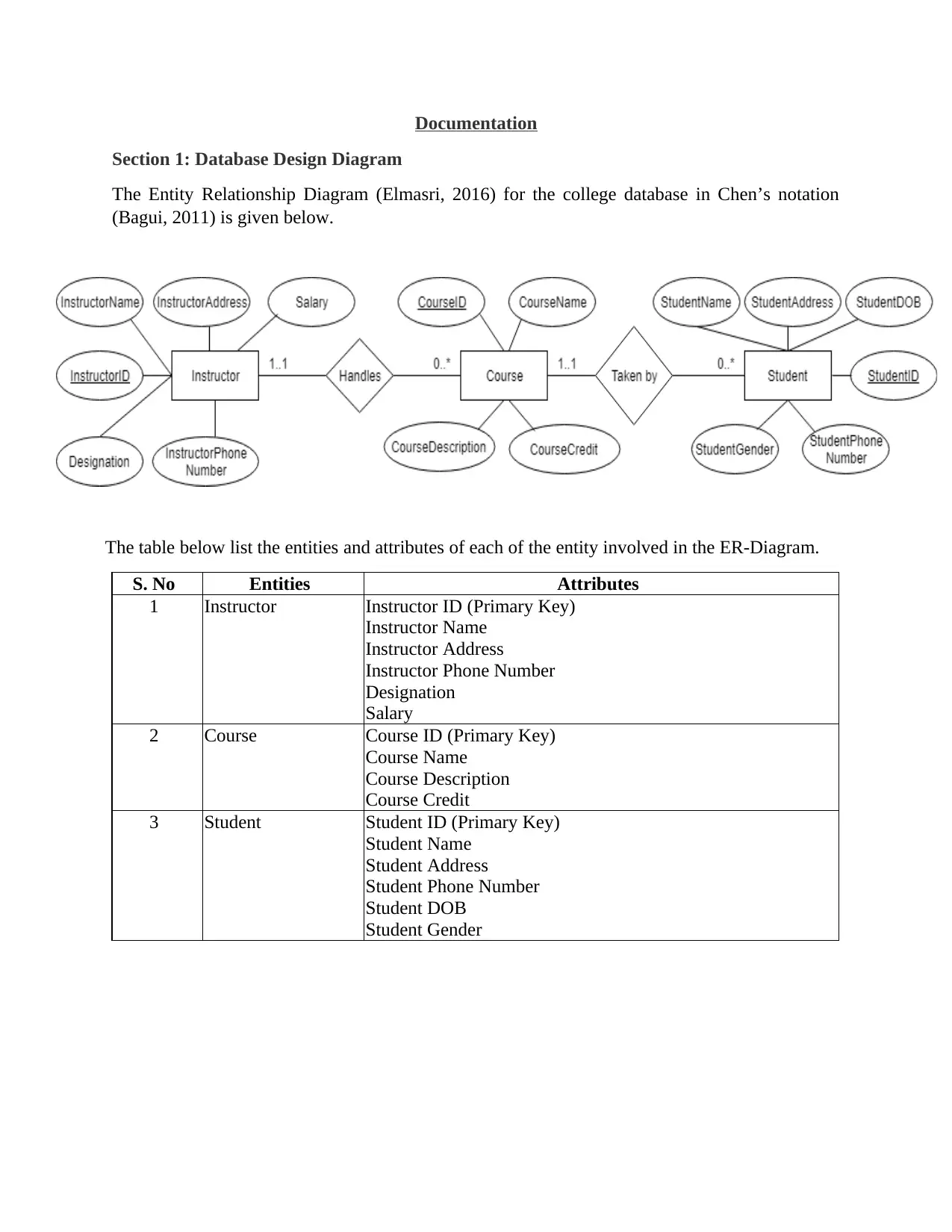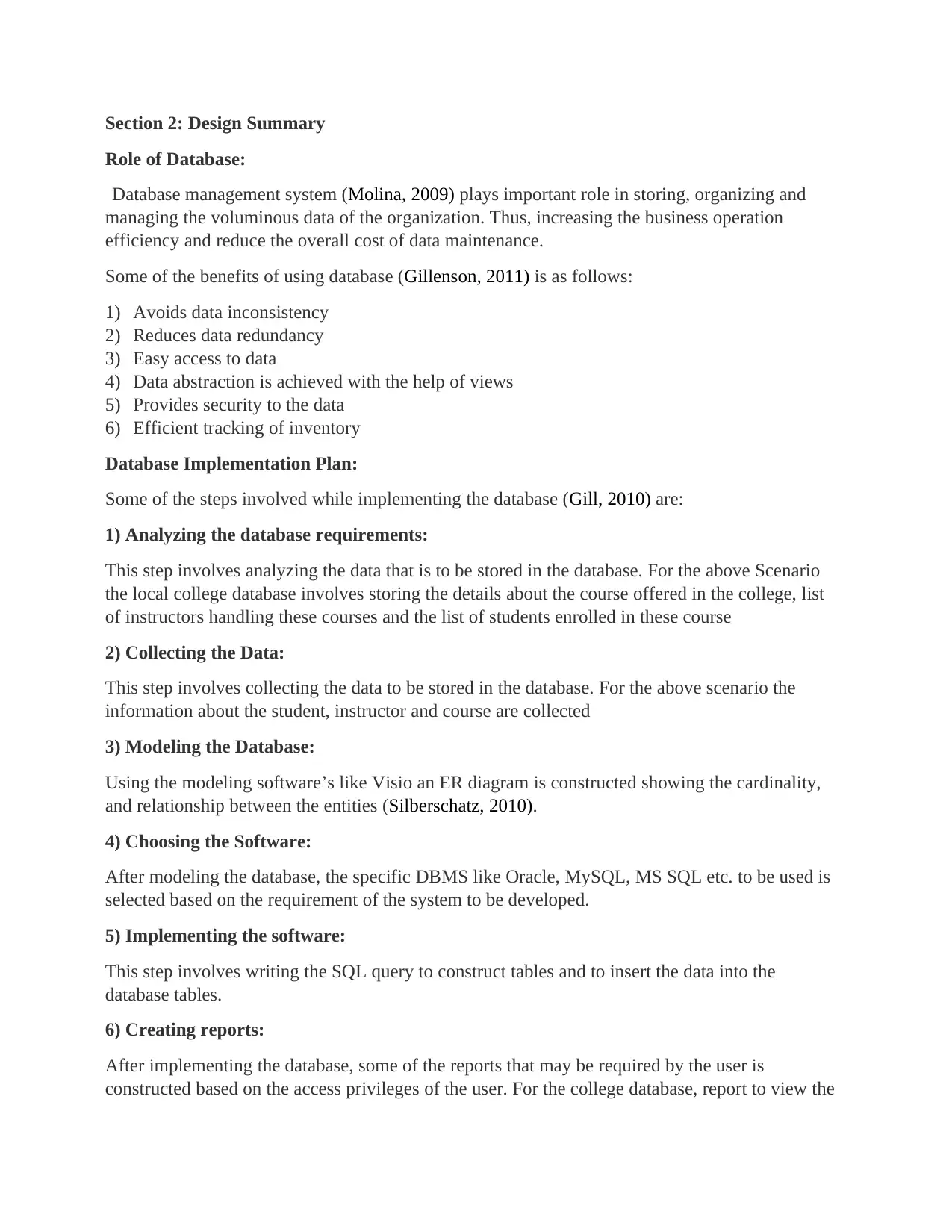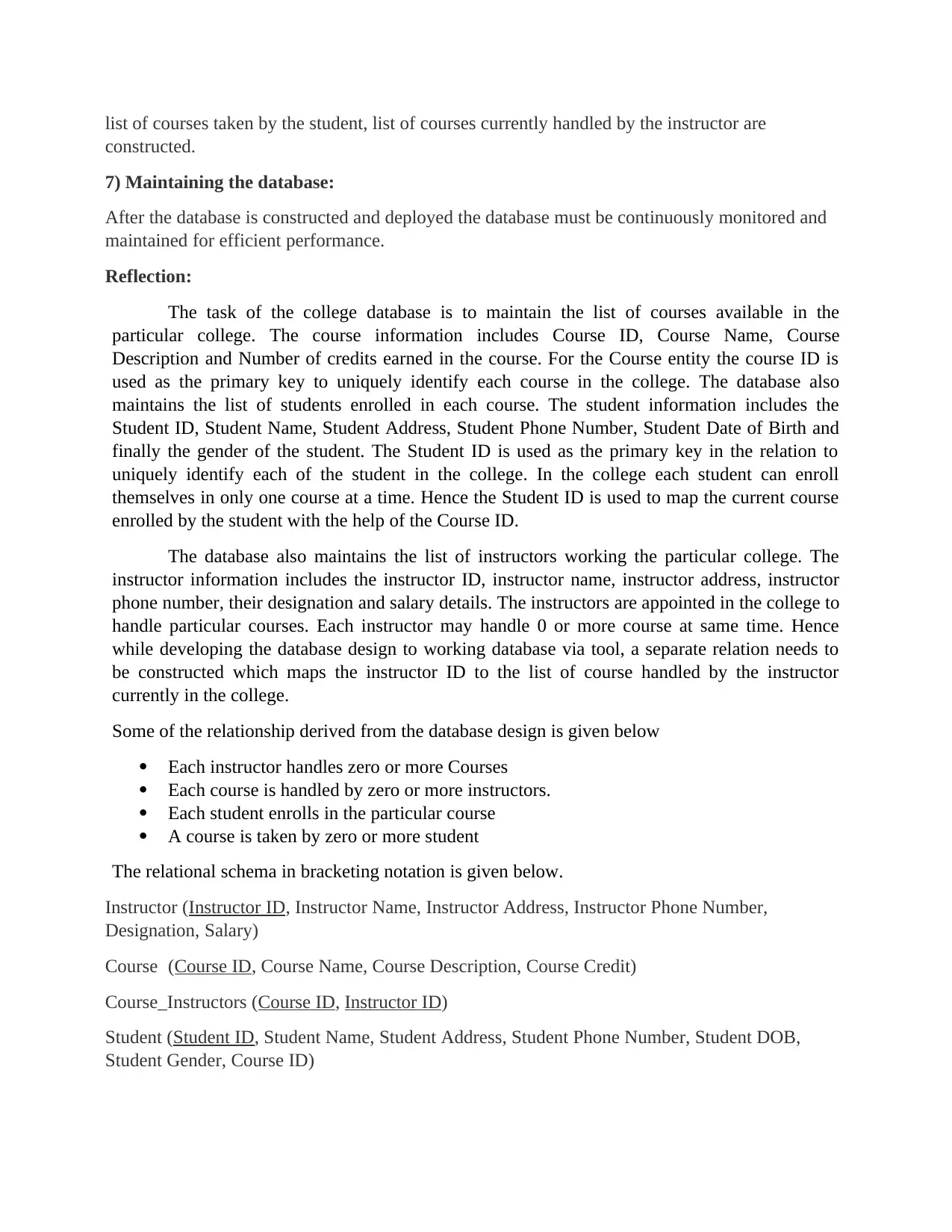Comprehensive Report on College Database Design and Implementation
VerifiedAdded on 2023/06/10
|5
|1073
|165
Report
AI Summary
This report provides a comprehensive overview of the design and implementation of a database for a college. It includes an Entity Relationship Diagram (ERD) illustrating the entities (Instructor, Course, and Student) and their attributes. The report discusses the role of a database management system in efficiently storing and managing college data, highlighting benefits such as data consistency, reduced redundancy, and improved security. It outlines a detailed database implementation plan, covering requirement analysis, data collection, database modeling using ER diagrams, software selection, implementation via SQL queries, report creation, and ongoing database maintenance. The reflection section details the entities within the college database like course information, student details, and instructor data, also describing the relationships between these entities, the primary keys used, and how these relationships are mapped in the database. The relational schema is presented in bracketing notation, and the document concludes with a list of references.
1 out of 5












![[object Object]](/_next/static/media/star-bottom.7253800d.svg)